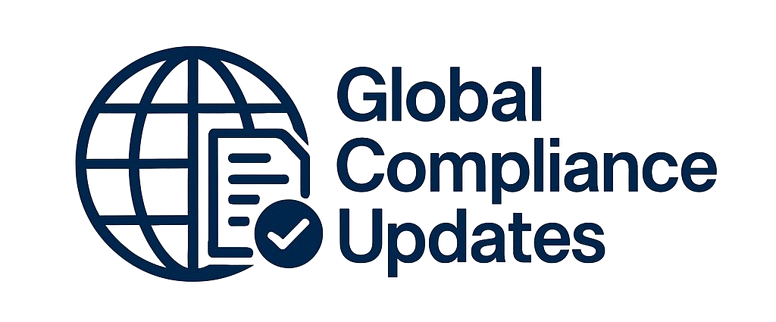Succession planning has emerged as an important issue as the world’s population ages under the dual impact of falling birth rates globally and improved healthcare. Neither is it easy to assume that young people will occupy traditional entry-level positions nor is it easy to fill positions from outside as other organizations scramble to make up for years of downsizing and cost-cutting. Succession planning can be systematic and can be effectively implemented, but that requires knowledgeable leaders, who are committed to developing their people. This webinar will define succession planning, distinguish it from such related topics as talent management and workforce planning, describe a conceptual model to guide implementation, and summarize key trends and new thinking in succession planning.
WHY SHOULD YOU ATTEND?
Here are the main reasons to participate:
1. Ensure Business Continuity and Stability
- Learn how to mitigate risks associated with leadership transitions.
- Develop a proactive approach to avoid disruptions when key employees leave.
2. Identify and Develop Future Leaders
- Gain insights into talent assessment and leadership pipeline development.
- Understand how to cultivate high-potential employees for key roles.
3. Retain Institutional Knowledge
- Learn strategies to capture and transfer critical knowledge before experienced employees retire.
- Reduce the risk of losing valuable expertise and corporate memory.
4. Align Succession Planning with Strategic Goals
- Understand how succession planning supports long-term business objectives.
- Learn to align talent management with organizational growth and sustainability.
5. Enhance Employee Engagement and Retention
- Discover how clear career paths and development opportunities increase employee motivation.
- Reduce turnover by fostering a culture of professional growth.
6. Improve Diversity and Inclusion in Leadership
- Learn best practices to create diverse leadership pipelines.
- Explore how inclusive succession planning strengthens organizational resilience.
7. Gain Insights into Legal and Compliance Considerations
- Understand the legal aspects of succession planning, such as non-discriminatory practices.
- Learn about compliance requirements that may impact leadership transitions.
AREA COVERED
- Important definitions
- Stunning facts and figures about succession planning
- Conceptual models to guide the implementation of different kinds of succession plans
- Trends in succession planning
- Common mistakes
- How to overcome common mistakes made in succession planning
LEARNING OBJECTIVES
- Define succession planning
- Distinguish succession planning from talent management and workforce planning
- Review conceptual models to guide the systematic implementation of succession planning
- List important trends in succession planning
- Review common mistakes made in succession planning and how to avoid them
WHO WILL BENEFIT?
- Senior managers
- Business owners
- Vice Presidents of HR
- Managers of HR
- Talent Development professionals
- Organization Development professionals
Here are the main reasons to participate:
1. Ensure Business Continuity and Stability
- Learn how to mitigate risks associated with leadership transitions.
- Develop a proactive approach to avoid disruptions when key employees leave.
2. Identify and Develop Future Leaders
- Gain insights into talent assessment and leadership pipeline development.
- Understand how to cultivate high-potential employees for key roles.
3. Retain Institutional Knowledge
- Learn strategies to capture and transfer critical knowledge before experienced employees retire.
- Reduce the risk of losing valuable expertise and corporate memory.
4. Align Succession Planning with Strategic Goals
- Understand how succession planning supports long-term business objectives.
- Learn to align talent management with organizational growth and sustainability.
5. Enhance Employee Engagement and Retention
- Discover how clear career paths and development opportunities increase employee motivation.
- Reduce turnover by fostering a culture of professional growth.
6. Improve Diversity and Inclusion in Leadership
- Learn best practices to create diverse leadership pipelines.
- Explore how inclusive succession planning strengthens organizational resilience.
7. Gain Insights into Legal and Compliance Considerations
- Understand the legal aspects of succession planning, such as non-discriminatory practices.
- Learn about compliance requirements that may impact leadership transitions.
- Important definitions
- Stunning facts and figures about succession planning
- Conceptual models to guide the implementation of different kinds of succession plans
- Trends in succession planning
- Common mistakes
- How to overcome common mistakes made in succession planning
- Define succession planning
- Distinguish succession planning from talent management and workforce planning
- Review conceptual models to guide the systematic implementation of succession planning
- List important trends in succession planning
- Review common mistakes made in succession planning and how to avoid them
- Senior managers
- Business owners
- Vice Presidents of HR
- Managers of HR
- Talent Development professionals
- Organization Development professionals
Speaker Profile
 William J. Rothwell
William J. Rothwell
William J. Rothwell, PhD, DBA, SPHR, SHRM-SCP, CPTD Fellow, RODC, FLMI is a Distinguished Professor in theWorkforce Education and Development program in the Department of Learning and Performance Systems at thePennsylvania State University, University Park campus.Work ExperienceDr. Rothwell worked full-time in human resources, training and Organization Development in both government (Illinois Office of Auditor General) and in a multinational company (American Brands, #48 on the Fortune 500 list) from 1979 until he joined Penn State University as a professor to head up a graduate program in Human Resource Development/Organization Development He has been a consultant for …
Upcoming Webinars

ChatGPT and Project Management: Leveraging AI for Project M…

Workplace Investigations 101: How to Conduct your Investiga…

Project Management for administrative professionals

The Monte Carlo Simulations in Excel for Risky Investments

Onboarding is NOT Orientation - How to Improve the New Empl…

Dealing With Difficult People: At Work & In Life

Transform Data into Insights: A Beginners Guide to Excel Pi…

Construction Lending And Real Credit Administration: Evalua…

Understanding Accounting for non - Accounting professionals

Harassment, Bullying, Gossip, Confrontational and Disruptiv…

New Form 1099 Reporting Requirements: 2025 Compliance Update

Human Error Reduction Techniques for Floor Supervisors

HR Metrics and Analytics 2025 - Update on Strategic Plannin…

Treating Employees Like Adults: Discipline versus Empowerme…

7 Ways To Beat Burnout: Without Quitting Your Job


How to Write Procedures to Avoid Human Errors

Handbook Overhaul 2026: Compliance, OBBB Act & Beyond

FDA Proposes Framework to Advance Credibility of AI Models

Ethical Terminations: Navigating Employee Exits with Legal …

Understanding EBITDA – Definition, Formula & Calculation

Project Management for Non-Project Managers - Scheduling yo…

4-Hour Virtual Seminar on Hidden Secrets of Selling & Marke…

Validation Statistics for Non-Statisticians

Data Integrity and Privacy: Compliance with 21 CFR Part 11,…


The Alphabet Soup: When the FMLA, ADA, COBRA, and Workers' …

Talent Management: How to Leverage AI and ChatGPT Tools for…


Offboarding with Care: Conducting Legal & Ethical Employee …

2-Hour Virtual Seminar on How to Conduct an Internal Harass…

Payments Fraud Detect & Prevent Check, ACH and P-Card Schem…

Managing Toxic & Other Employees Who have Attitude Issues



Reduce Stress in the Workplace: Effective Ways to Handle Co…





Excel - Pivot Tables - The Key To Modern Data Analysis and …
